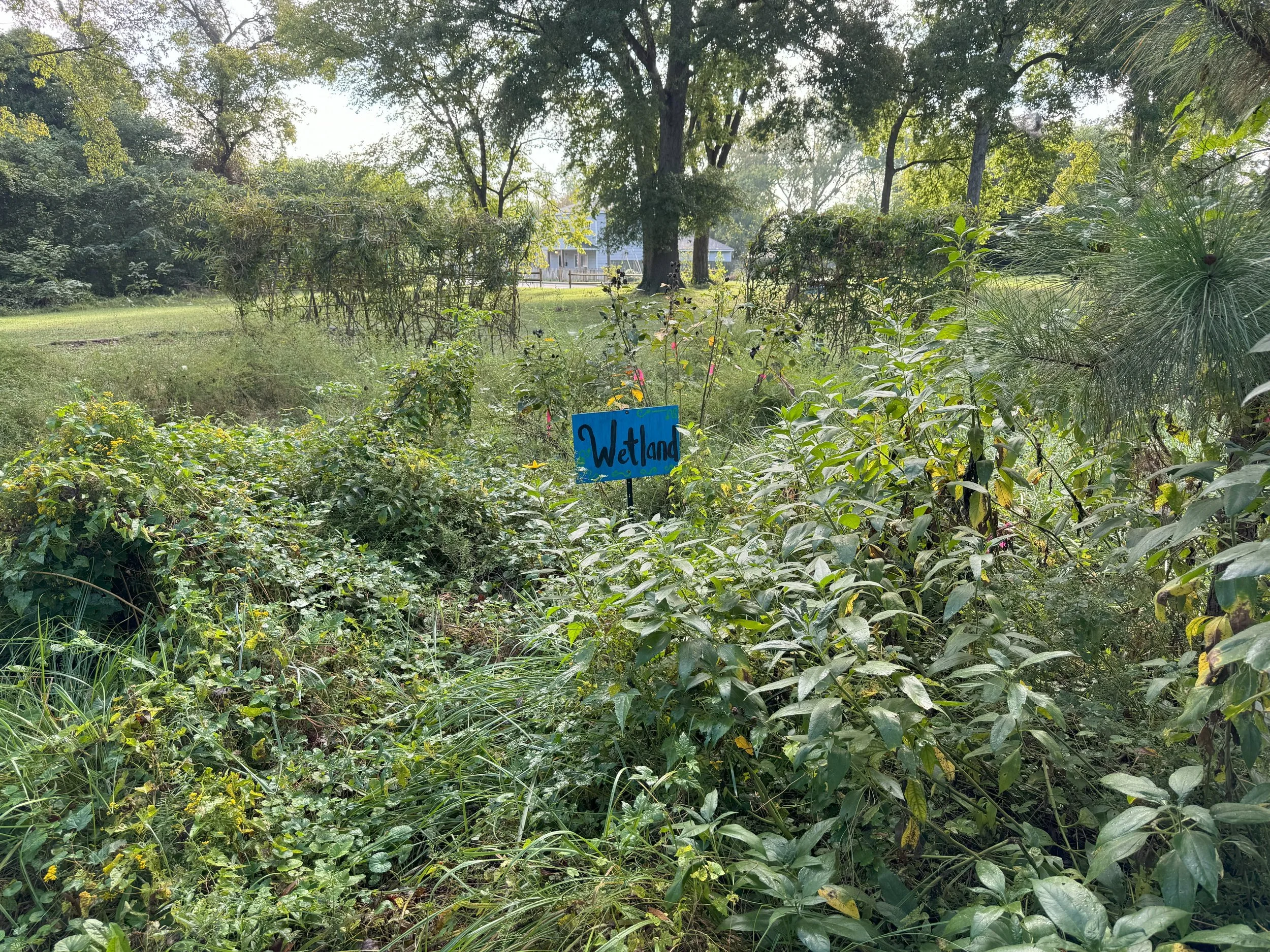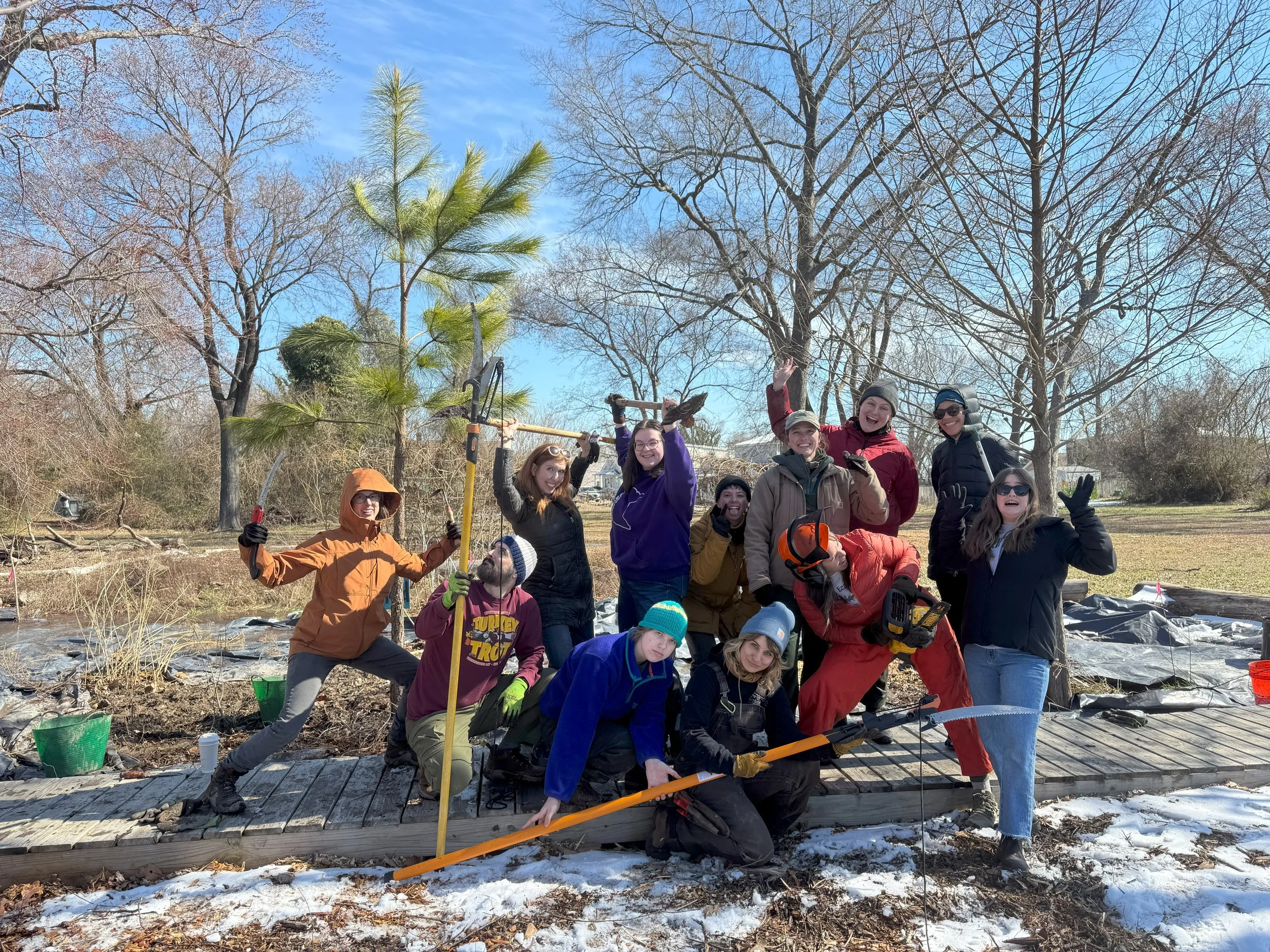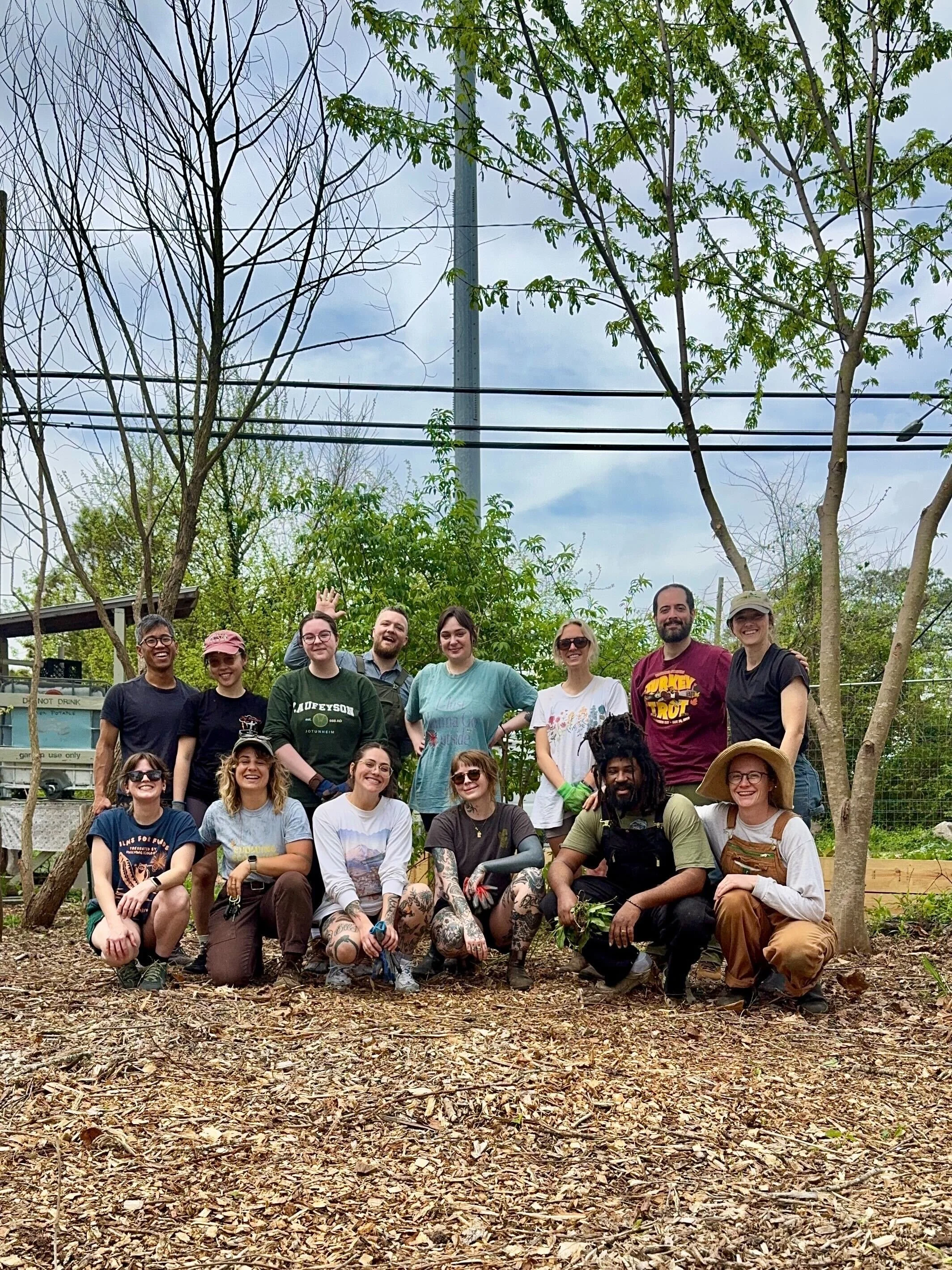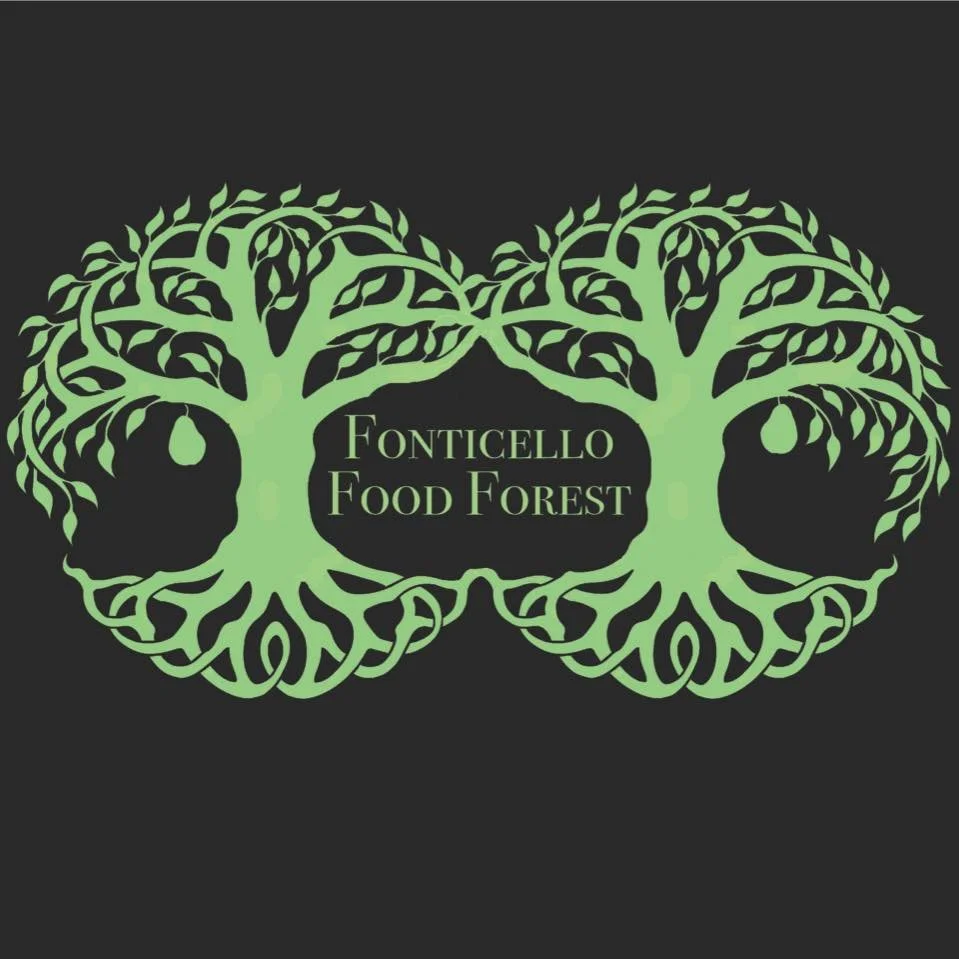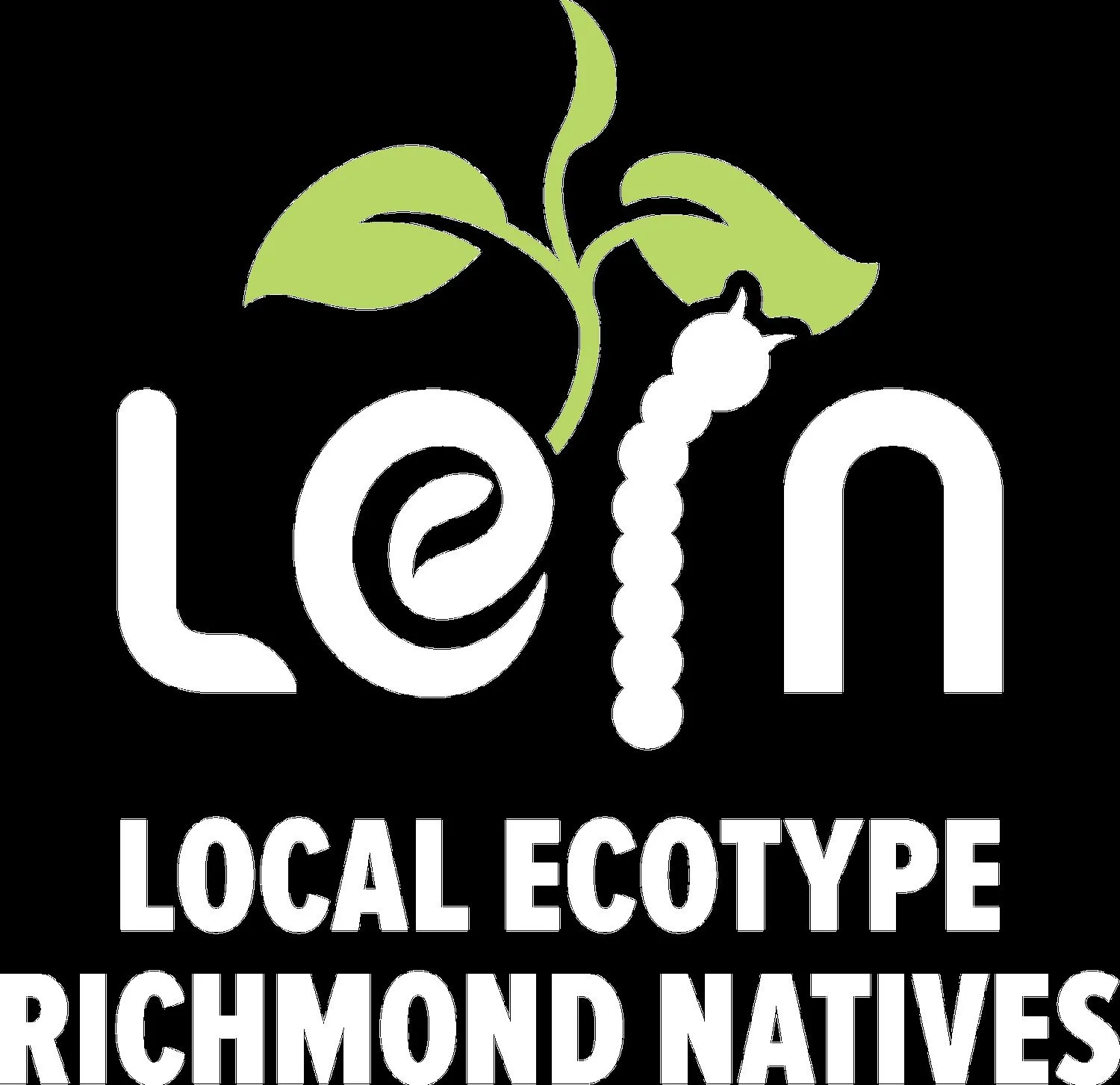Fonticello Food Forest at Carter Jones Park
2715 Bainbridge St, Richmond, VA 23225
The Wetland
This project focuses on transforming "The Wetland" into a resilient native plant community through invasive species removal, community collaboration, and ecologically sensitive practices. With no herbicides used due to community and ecological concerns, volunteers have cleared invasive species by hand and applied wood chips for suppression. The sunnier section will undergo solarization to further deplete invasive seed banks. Although the site doesn't meet official wetland criteria, expert consultation and community input are informing a new vision for the space, supported by a thoughtfully selected, low-maintenance native plant palette.
Fonticello Food Forest
A community gathering place
FFF has long been a beacon of community in Southside - a living testament to what’s possible when we invest in shared spaces and cultivate the ecosystems that sustain us.
During a Feminist Bird Club community work day, members of our team took note of a low-lying area directly behind the compost bins and raised beds. A hand painted sign referred to it as “The Wetland”. The total area is somewhat kidney bean in shape, measures approximately 3,100 sqft, and is full to part sun. A narrow boardwalk dissects it from north to south - but it was impassable due to encroaching vegetation at that time.
From a distance, it appeared The Wetland was bursting at the seams with life. Upon a closer look and conversations with those who have been intimately caring for FFF, it became clear that The Wetland was desperately in need of intervention. Invasive plants had long been outcompeting the native flora, slowly erasing the ecological balance that once defined the area.
Intervention
Re-establishing a native plant community will take time and collaboration, but The Wetland holds immense potential. There are glimmers of an existing native eco-community when you dive in - asimina triloba (pawpaw), sambucus canadensis (elderberry), rudbeckia laciniata (cutleaf coneflower), and eutrochium sp. (joe pye) to name a few. Our goal is to support FFF’s mission by offering our expertise and resources, helping to shape this space into something that is as diverse and resilient as the community that frequents it.
In order to evolve the ecology of this site in a positive direction, the invasive plants need to be removed and controlled. We will not be using any herbicides as a method to control the invasive plants out of respect for community preference and the plot’s proximity to the food forest. Through the help of many volunteers, we’ve hand pulled thousands of invasive dock, ground ivy, and star of Bethlehem. Wood chips were then spread to a depth of approximately 8” throughout the shadier western half. The sunnier half, east of the boardwalk, presents a different challenge. This side is inundated with European cool season grasses which would require extensive soil disturbance and labor if all hand pulled. We’ve determined that this side is an ideal candidate for solarization. The goal is to remove the existing invasives and slowly over time, deplete the weed seed bank.
Given the name of The Wetland, we sought the expert advice from two elder wetland delineation experts, Bill Shanabruch and Stacey Moulds. For an area to be classified as a wetland, its soil must meet several hydrological and ecological parameters. Unfortunately none of these parameters were met. Recognizing this, we’re now in the process of garnering community feedback that better reflects its evolving identity and ecological function. With a clear understanding of the site conditions, we’ve developed a plant palette tailored for resilience and low maintenance care - one that will help this landscape thrive for years to come.
Native Planting Palette
Group A
Mertensia virginica/Virginia Bluebells
Chasmanthium latifolium/River Oats
Solidago caesia/Bluestem Goldenrod
Juncus effusis/Common Rush
Aster cordifolius/Heart-leaved Aster
Chelone glabra/Turtlehead
Eutrochium dubium/Joe Pye Weed
Corylus americana/American Hazelnut
Vaccinium corymbosum/Highbush Blueberry
Ludwigia alternifolia/Seedbox
Group B
Zizia aurea/Golden Alexander
Scirpus cyperinus/Woolgrass
Panicum virgatum/Switchgrass
Conoclinium coelestinum/Blue Mistflower
Rudbeckia fulgida var. fulgida/Black-eyed Susan
Pycnanthemum muticum/Clustered Mountain Mint
Asclepias incarnata/Swamp Milkweed
Physostegia virginiana/Obedient Plant
Solidago erecta/Showy Goldenrod
Liatris spicata/Blazing Star
Symphyotrichum novi-belgii/New York Aster
Group C
Carex stricta/Tussock Sedge
Symphyotrichum laeve/Smooth Aster
Helenium autumnale/Sneezeweed
Packera aurea/Golden Ragwort
Phlox paniculata/Fall Phlox
Verbena hastata/Blue Vervain
Monarda fistulosa/Wild Bergamot
Volunteer Sign Up
Volunteer Days:
Second Saturday of every month
10am- 12pm
Join us in stewarding the garden! We will be hand weeding invasive plants, mulching, and preparing the soil for our fall planting. Please bring water and wear comfortable clothes, preferably long pants and closed toed shoes.
Sept 13th
The Wetland at Fonticello Food Forest
Oct 11th
The Wetland at Fonticello Food Forest
Nov 18th
The Wetland at Fonticello Food Forest
Dec 13th
The Wetland at Fonticello Food Forest


